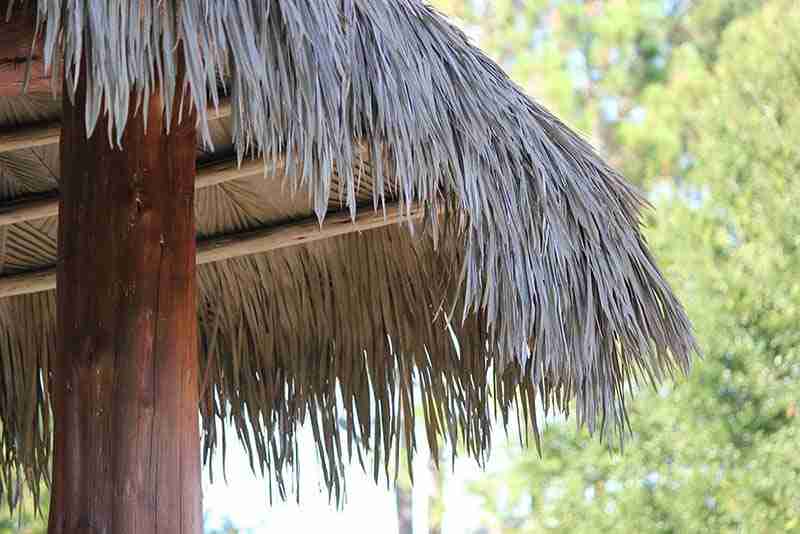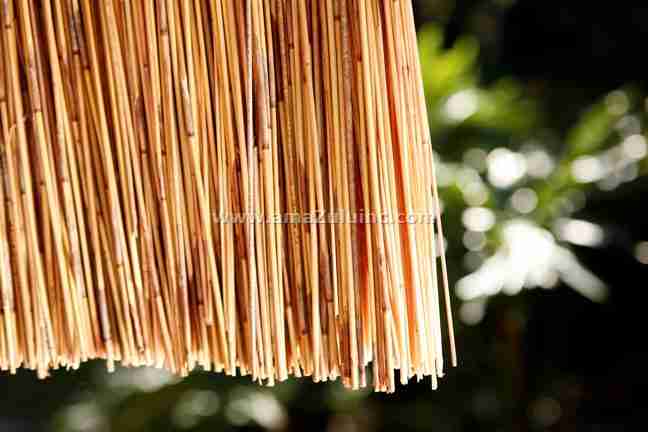The Interesting History behind Amazing Tiki Huts
Many architectural expressions have their roots in history and many of them stay local. But tiki huts, with origins in Polynesian design and style, are quintessentially American. Tiki huts have sparked the idea of a carefree island culture in the American imagination before the 20th century.
Where are Tiki Huts from?
Tiki decor, as we know it today, was born in the restaurant industry, as it became popular to have themed dining experiences. Tiki hut bars and restaurants started to feature thatched roofing, tiki masks, and Polynesian sculpture to create a real-life “tropical paradise”.
In Polynesian culture, there is a Maori mythological figure of Tiki. He is thought to be the first man created by one of the great gods. Presumably, that’s how the word “tiki” became attached to the huts we know and love today.
Like all trends, tiki styled thatch rose and fell, and during the 1970s, things like tiki huts and outdoor tiki bars went out of fashion. They began to be considered inauthentic and gauche.
Why are Tiki Huts popular again?
Today, however, Tiki huts are experiencing a resurgence in popularity. Tiki is a throwback to the 1950’s, and so it is an authentic celebration of American pop culture. Wherever you go, you see signs of tiki thatch.
Disney World’s first hotel, The Polynesian, has again become one of its most popular resorts and exudes every detail you would expect of tiki. There are huts surrounding the pool and thatch is on every available surface. Other original tiki-themed destinations like Trader Vic’s are hot spots again.
A few other popular outdoor tiki hut designs include:
- Tiki Hut Gazebo
- Tiki Bars
- Garden Tiki
- Chickee Hut
- Palapa Huts
- HawaiianTiki
These tiki hut shade structures are a welcome addition to any commercial property. Likewise, tiki huts and tiki bars are also backyard staples for those who love entertaining and want to create a tropical experience.
Tiki Hut Thatch Have a Distinctive Look
Thatch roofs give tiki huts their characteristic appearance, as they look tropical, casual and natural. Like palm tree fronds rustling in the breeze, tiki thatch roofs move organically, unlike any other roofing material.
A tiki thatch roof covering is all about ambiance, which is why tiki huts are so popular. They immediately create a mood: peace, tranquility and relaxation. But not all thatch is the same. There are different types of thatch used for roofing: Mexican Palm Thatch, Tahiti Thatch and Thatch Reed Panels.
Mexican Palm Thatch
Mexican Palm Thatch is very fair and blonde and often hangs in naturalistic, uneven strands around the roofline. With its shaggy thatch exterior and woven knotted interior, it is effortless to convert ordinary structures into tropical island retreats. It is made with the fronds of Mexican palm trees.
Tahiti Thatch
Tahiti Thatch is thicker and more appropriate for waterproofing than Mexican Palm Thatch. It is a chunky, rustic thatch sewn with nylon rope for durability. Clients love Tahiti thatch for their tiki huts because it’s 98% waterproof.
Thatch Reed Panels
Thatch Reed Panels are made from natural African reeds and sewn together with a flexible urethane top strip for maximum waterproofing. They create a much more refined thatched roof appearance than shaggy palms.
One of the features of tiki thatch roofing materials that people like most is that it’s natural, made from materials grown on earth. Because thatch is natural, it mixes well with other design materials, so you can turn almost any area into a tropical paradise.
Are you ready to tiki thatch?
If you’re interested in using Thatch products, we would love to help you! amaZulu, Inc. offers high-quality thatch products for all of your eco-friendly and exotic projects.
No matter your style, budget, or the lifespan of your project, you can count on us to be your supplier of choice. We will gladly offer you recommendations for Natural thatch or Synthetic thatch.
Contact us today for more information or give us a call, toll-free at 877-243-5309.
Related content: Tiki Huts:
How It’s Made: Synthetic Thatch Roofing
A Look at the History of Thatched Roofing
Why Thatch Is Becoming The Go-To Roofing Choice For Backyards
Benefits of Building with Thatched Roofs
Why does using thatch benefit the environment?
amaZulu, Inc. has hand-selected manufacturers who produce eco-friendly, high-quality natural architectural materials. Our selection presents a dynamic list of options when considering the environment.
At amaZulu, Inc., we extend our legacy beyond business to the community when we partner with domestic and international organizations that create economic opportunities to reduce poverty. We help improve the lives of the people who grow and produce our products.





